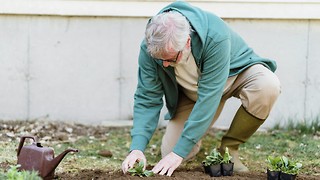The Body in Women’s Art Now, Part 1 – Embodied
New Hall art collection
"Naked ladies?" chuckled the New Hall porter wryly. While he could be forgiven for inferring nudity from such a title, his quick-fire summary shows exactly the kind of attitude which these artworks seem to kick against. As it happens, this exhibition is never pornographic, if pornography is being defined as the presentation of nude women with the intention to sexually arouse. Its approach to nakedness is too political and too heartfelt to appear degrading. Instead, in the photography and video installations of Sigalit Landau, Regina Jose Galindo, Jessica Lagunas, and Lydia Maria Julien the body is exposed as a place in which to talk about being human, bridging the gap between the fleshy and the abstract, the exterior and interior dimensions of female life.
By engaging with modern society’s ‘beauty myth’, Guatemalan injustice towards women, and Israeli identity in bodily terms, these artists have expressed complex topics in a language that the viewer simply cannot shy away from, with the exception of Julien that is. Predictably trendy but intellectually soft, Julien’s photographs freeze models and students in shadowy and robotic frames, limbs bent as though about to break. On a technical level they’re decently crafted, but seem rather wanting in social honesty; depicting the body demands truth and detail, not fashion and artifice, as Sigalit Lindau’s Barbed Hula makes screamingly clear. The best occasion in a gallery this term, Barbed Hula is a performance-video in which a woman stands on the seashore, a coil of wire rotating about her pelvis. Refusing to frame the shot in any conventional way (the subject’s face is never visible on screen), Lindau generates questions about borders for the viewer: the borders of the body created by the skin, and the borders of Israel created by the sea. Drifting foam is paired with pierced flesh in an artwork of political charge and lyricism.
 News / Uni Scout and Guide Club affirms trans inclusion 12 December 2025
News / Uni Scout and Guide Club affirms trans inclusion 12 December 2025 News / Cambridge Vet School gets lifeline year to stay accredited28 November 2025
News / Cambridge Vet School gets lifeline year to stay accredited28 November 2025 Science / Did your ex trip on King’s Parade? The science behind the ‘ick’12 December 2025
Science / Did your ex trip on King’s Parade? The science behind the ‘ick’12 December 2025 News / Cambridge study finds students learn better with notes than AI13 December 2025
News / Cambridge study finds students learn better with notes than AI13 December 2025 News / Pembroke to convert listed office building into accom9 December 2025
News / Pembroke to convert listed office building into accom9 December 2025







